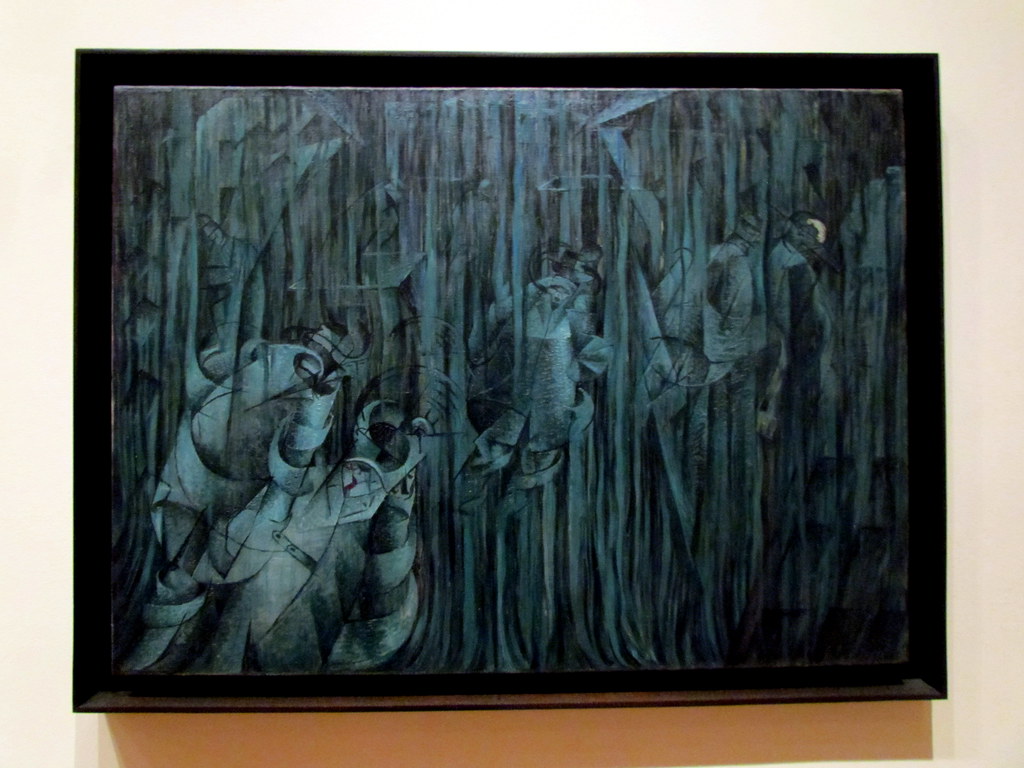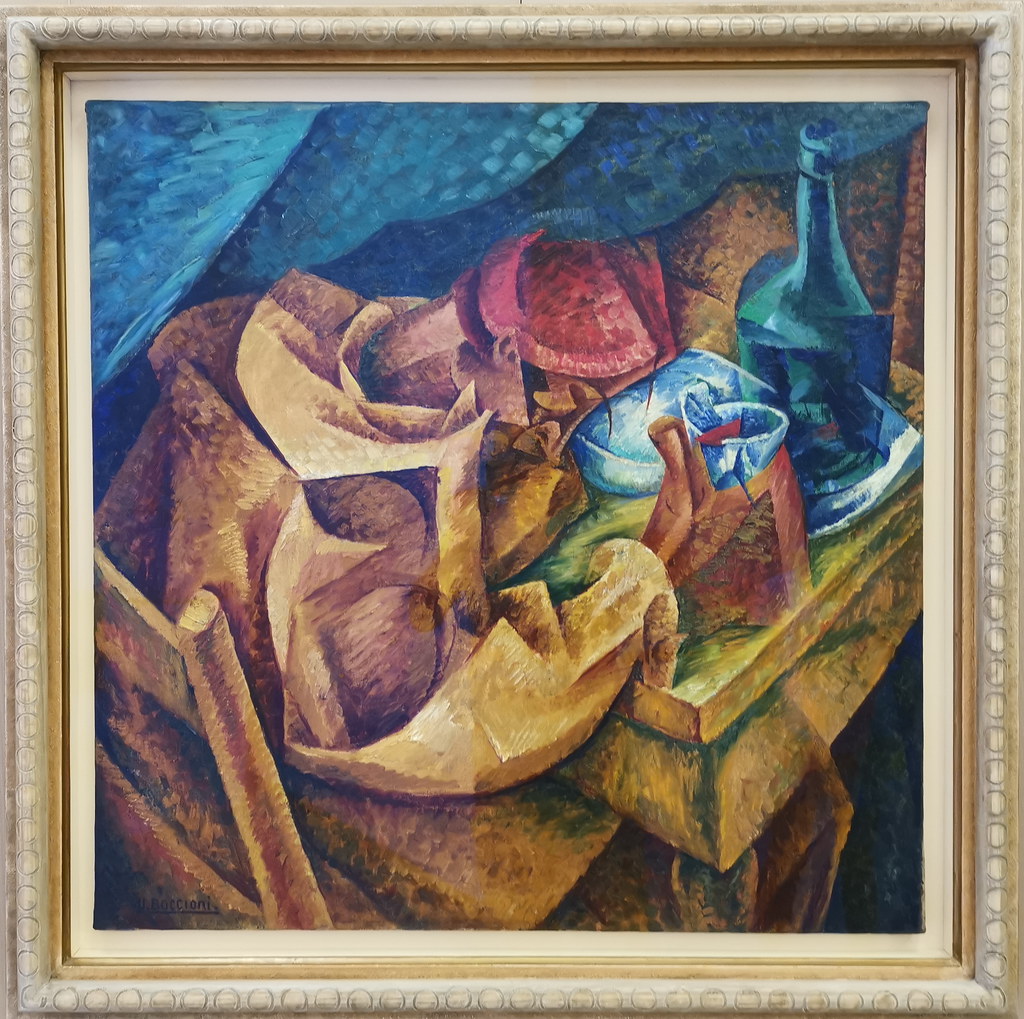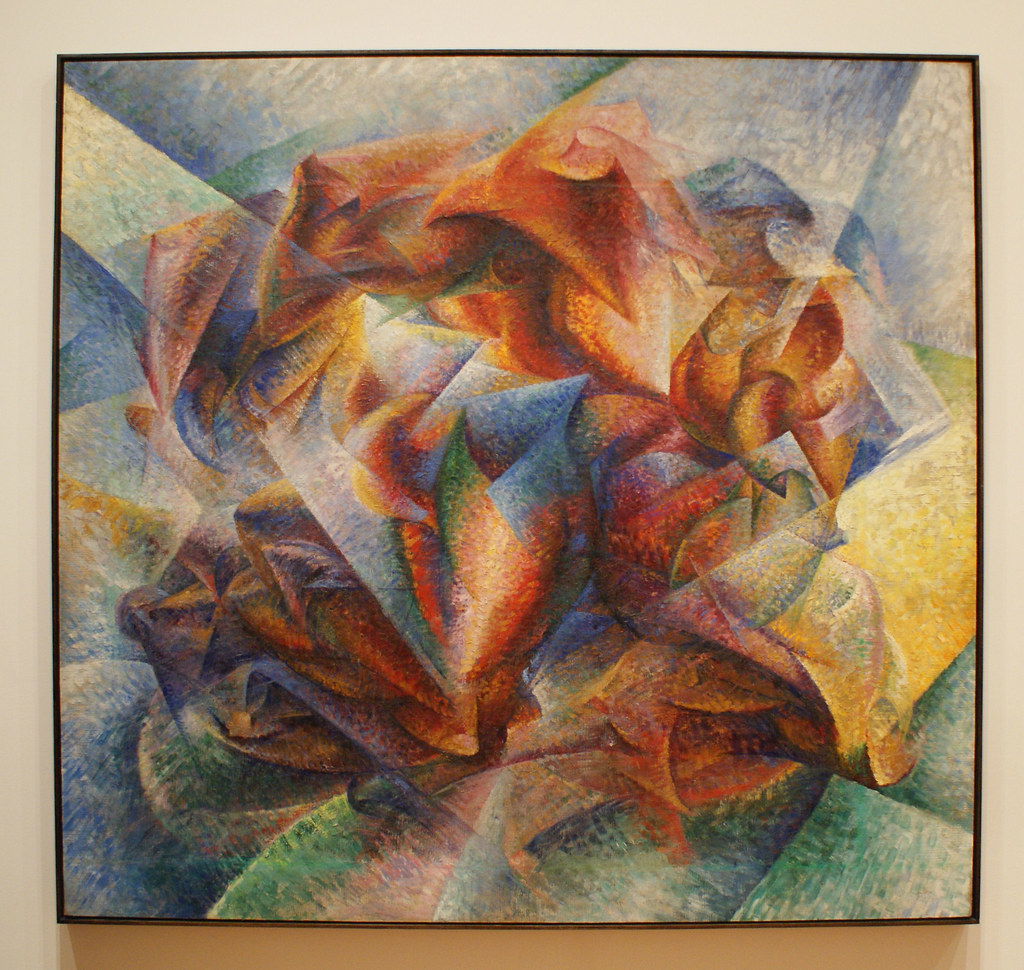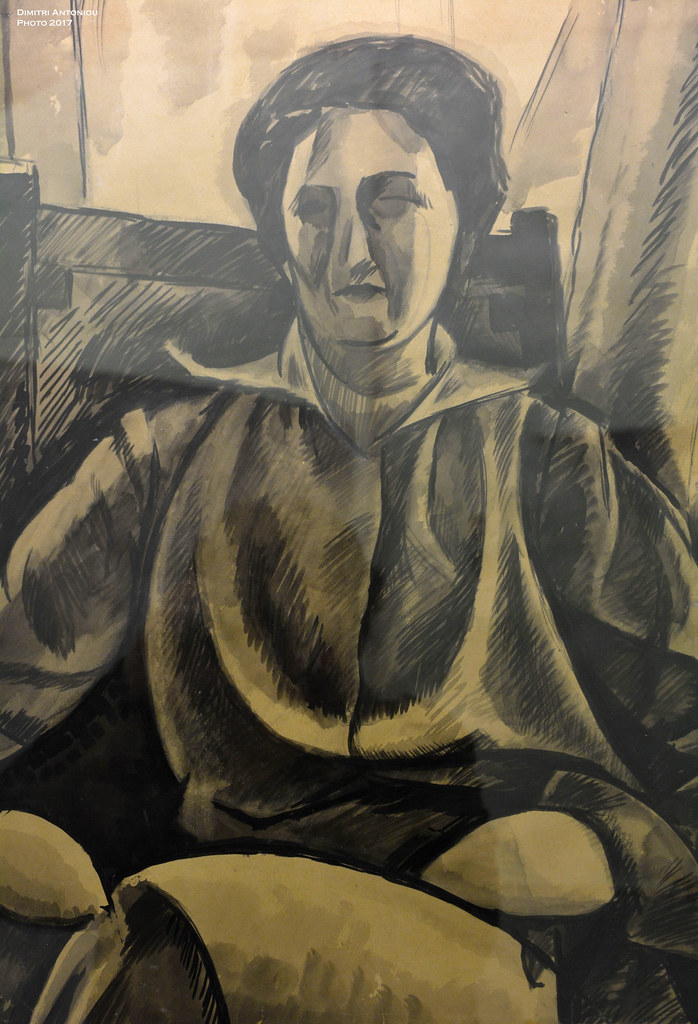Umberto Boccioni was an influential Italian painter and sculptor and helped to shape the revolutionary aesthetic of the Futurism Movement.

Image source: https://search.creativecommons.org/photos/7a867e9c-5907-4230-801e-edcf2cac0405 by bobistraveling
Umberto Boccioni was an important and influential Futurist artist, an artistic movement that emerged in the years preceding the First World War. Boccioni contributed to the development of the theories of movement, and also to the introduction of the visual innovations that led to the dynamic, and Cubist style now so closely associated with the group.

Image source: https://search.creativecommons.org/photos/a9a895f3-d8d7-4dd2-9cf6-2e6b0f1662b0 by Allie_Caulfield
Early life

Image source: https://search.creativecommons.org/photos/e307b613-58de-4951-875f-5c3a842a5398 by rverc
Umberto Boccioni was born in 1882 in Reggio Calabria, in southern Italy while his parents were originally from Romagna, further north. As a boy, he often moved with his family, until they settled in the Sicilian city of Catania in 1897, where he received secondary education. In 1901, when he moved from Catania to Rome and enrolled at the Academy of Fine Arts in Rome.
Before Futurism

Image source: https://search.creativecommons.org/photos/c2b23804-6896-4232-b23f-b3552d027d0c by George M. Groutas
Boccioni initially matured as a Neo-Impressionist painter, attracted to landscape and portraits subjects. Only when he encountered Cubism did he develop a style that corresponded to the ideology of dynamism and violent social upheaval that were at the heart of Futurism. Boccioni borrowed the geometric shapes typical of the French style using them to evoke thunderous and surprising sounds to accompany the movement depicted.
How did he arrive to Futurism?

Image source: https://search.creativecommons.org/photos/58342b9c-1c7c-4c47-841e-68ce1e49afb8by rverc
Boccioni believed that scientific advances and the experience of modernity required the artist to abandon the tradition of depicting static, and legible objects, the real challenge, according to him, consisted in representing movement, the experience of flow, and the interpenetration of objects. Boccioni summed up this project with the phrase, “physical transcendentalism.”

Image source: https://search.creativecommons.org/photos/061603af-f3c1-42b9-8449-cd771778b4ac by griannan
Boccioni also strongly believed in the importance of intuition, inherited from the writings of Henri Bergson and the Symbolist painters of the late-19th century. This shaped Boccioni’s approach to the representation of the modern world, encouraging him to give it symbolic, almost mythical dimensions that evoked the artist’s emotions as much as the objective reality of modern life. Boccioni’s approach is very different from that of the Cubists, who attempted to describe the physical characteristics of objects closely, albeit in a new way.

Image source: https://search.creativecommons.org/photos/584556a1-41a9-45d2-b89c-00bd8356cd20 by DimAntArt
Sculpture
The drafting of his Manifesto tecnico della scultura futurista (Technical manifesto of Futurist sculpture), published on 11 April 1912, was Boccioni’s intellectual and physical launch into sculpture. Much of his experimental work from late 1912 to 1913 was destroyed, including pieces that are known from photographs of contemporary paintings. One of the few surviving pieces is the Antigrazioso also known as The Mother.

Image source: https://search.creativecommons.org/photos/56eac4e4-9aeb-4ec0-b77a-3a615c78a56a by rverc

Image source: https://search.creativecommons.org/photos/d3ca22cf-5a36-4970-a0fc-f9f1dad2073f by chrisinphilly5448
At the end of 1913, he made his masterpiece in wax, Forme uniche della continuità nello spazio (Unique Forms of Continuity in Space). His goal was to represent a “synthetic continuity” of the movement, instead of an “analytical discontinuity” that he saw in artists such as František Kupka and Marcel Duchamp. During his lifetime, the work existed only as a plaster cast, it was cast for the first time in bronze in 1931. It was the subject of extensive comments, and in 1998 it was chosen as an image to be engraved on the back of the Italian 20 cent euro coin.
